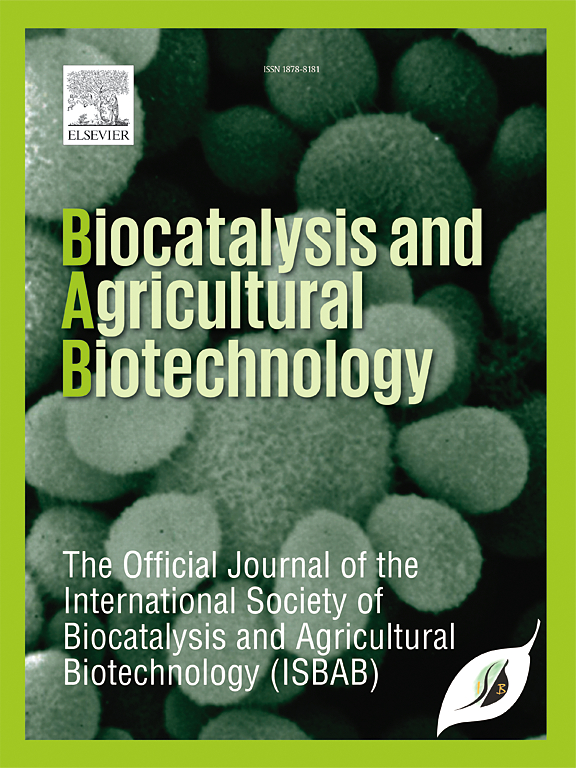Harnessing starch-stabilized biogenic silver nanoparticles for sustainable bacterial blight management in soybean
IF 3.4
Q2 BIOTECHNOLOGY & APPLIED MICROBIOLOGY
引用次数: 0
Abstract
Green nanotechnology is a new strategy that contributes to sustainable agriculture by enhancing crop production, restoring soil quality, and improving pest management control. Green nanotechnology has emerged as a promising strategy to overcome the limitations of conventional chemical synthesis of nanomaterials. In this study, biogenic silver nanoparticles (st-AgNPs) were synthesized in the presence of extracellular metabolites of the fungus Macrophomina phaseolina with further modification of the particle's corona using starch to enhance stability and performance. After confirming the biocidal activity of st-AgNPs, their potential use against bacterial blight caused by Pseudomonas savastanoi in soybean was analyzed. Under controlled conditions, the effects of different NP concentrations were tested on healthy and infected plants. No evidence of phytotoxicity was observed in plants treated with 50–400 μg ml−1 of NPs. A 100 μg ml−1 st-AgNPs dose was the most effective in controlling the disease progression. Subsequent greenhouse experiments showed that infected plants sprayed with st-AgNPs (100 μg ml−1) improved their general status and increased the aerial biomass (36.6%) compared to non-treated plants. Furthermore, spray treatment with NPs partially reversed the negative effect of the infection, showing a 38.9% recovery in the greenness index. Notably, the severity of infection decreased by 78%, with no detectable silver traces in plant leaves. Biochemical analyses revealed that st-AgNPs treatment resulted in a reduction of phenylalanine ammonia-lyase (PAL) and lipoxygenase (LOX) activities, as well as lipid peroxidation, compared to non-treated infected plants. These findings suggest that the developed st-AgNPs not only effectively control P. savastanoi infection in soybean but also exhibit the potential to serve as a low-impact, environmentally friendly tool for inclusion in plant disease management protocols across various crops.

求助全文
约1分钟内获得全文
求助全文
来源期刊

Biocatalysis and agricultural biotechnology
Agricultural and Biological Sciences-Agronomy and Crop Science
CiteScore
7.70
自引率
2.50%
发文量
308
审稿时长
48 days
期刊介绍:
Biocatalysis and Agricultural Biotechnology is the official journal of the International Society of Biocatalysis and Agricultural Biotechnology (ISBAB). The journal publishes high quality articles especially in the science and technology of biocatalysis, bioprocesses, agricultural biotechnology, biomedical biotechnology, and, if appropriate, from other related areas of biotechnology. The journal will publish peer-reviewed basic and applied research papers, authoritative reviews, and feature articles. The scope of the journal encompasses the research, industrial, and commercial aspects of biotechnology, including the areas of: biocatalysis; bioprocesses; food and agriculture; genetic engineering; molecular biology; healthcare and pharmaceuticals; biofuels; genomics; nanotechnology; environment and biodiversity; and bioremediation.
 求助内容:
求助内容: 应助结果提醒方式:
应助结果提醒方式:


